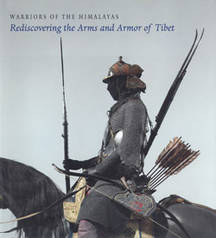Winners 2008
2008
The jury of the Justus Lipsius Award has decided to grant the award of 2008 to::
Donald J. LaRocca
Warriors of the Himalayas. Rediscovering the arms and armor of Tibet
“Warriors of the Himalayas. Rediscovering the arms and armor of Tibet” was published in 2006 in conjunction with the namesake exhibition held at the Metropolitan Museum of Art of New York. It is an outstanding contribution to the history and typology of traditional arms and armor from Tibet and the Tibetan area of influence, a field that has been unknown and neglected for a long time.

Warriors of the Himalayas: Rediscovering the Arms and Armor of Tibet
Edited by Donald J. LaRocca
Published by New Haven, US, Yale University Press. 2006
Language: English
Pages: 308, 135 color plates
Hardcover
Size 29 x 26,5
ISBN 0-30011-153-3
The Jury fully agrees that Don LaRocca’s book is groundbreaking, carries a novel approach to an almost uncharted field of arms and armour and therefore deserves unanimous praise. Four essays introduce the catalogue and are most relevant to and even essential for further research on this subject. The catalogue itself is divided in different parts, treating different kinds of armament. The captions and the notes on the exposed objects reflect a detailed research and a new knowledge. The index at the end is an excellent tool for discovering the book. Special attention is given to the Tibetan arms glossary and terminology. The author has studied the subject very thoroughly and with great enthusiasm. He has learned the Tibetan language and stayed different times in Tibet in order to be able to use local sources and research. He has searched contact with Tibetan people to make sure his perspective isn’t purely the approach of an outsider and he has included interdisciplinary research in his study. For example, the book deals with a tentative – yet quite novel – history of ironworking in Tibet. An excellent bibliography resumes old and unknown sources and literature. Although it is mainly centred on the collections of the Metropolitan Museum -quite significant in their own right- the book also relies on a wide range of source materials such as vintage photographs, written accounts (also in the Tibetan language), artwork and, of course, Tibetan artefacts i.e. collectors’ items, military booty, temple votive pieces result of the journeys the author made in the country. The production of the book is of the very highest quality. The design is beautiful, with each article well illustrated perhaps setting a new standard for this kind of objects. All in all this study is a leap forward in understanding Tibetan arms and armour and, it is to be hoped that it will lead to other comparative research. The jury of the Justus Lipsius Award